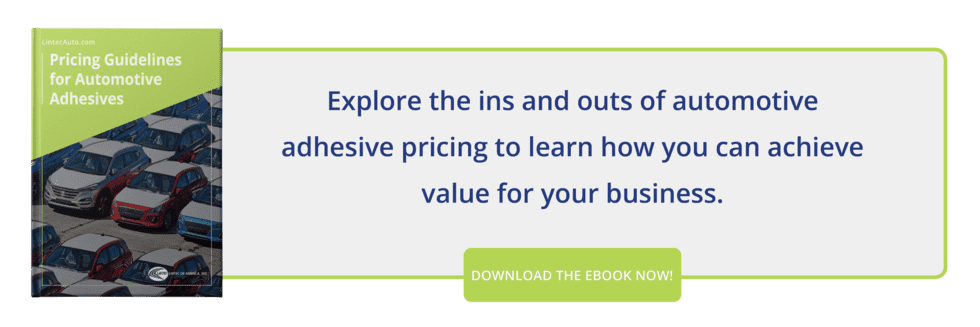There may be no sector under greater pressure to do more with less than the automotive industry.
Annual consumer demand for technological conveniences, a quieter ride, longer service life, and improved fuel efficiency will always trend upward. At the same time, the powers that be demand lighter weight, reduced carbon emissions, increased safety, and better wages for workers. All of this flies in the face of expensive steel tariffs and trade disagreements that damage the bottom line. How can automakers satisfy everyone and still stay on-budget?
Create savings with these 3 automotive adhesives:
Many manufacturers have drastically reduced their reliance on fasteners, welds, paints, sprays, and other techniques that involve high labor/production costs and time-intensive processes. In their place? Cost-effective, lightweight, easy-to-use, rapid-curing, high-strength automotive adhesives.
The most obvious area for savings is in structural adhesives, which eliminate the need for pilot holes, rivets, bolts, and thicker substrates—saving time, money, and mass. The proliferation of structural automotive adhesives in the market is well documented.
Here are three more automotive adhesives that can rescue your budget from the brink.
Paint Replacement Films
As an alternative to the expensive and time-consuming painting process, paint replacement films can achieve the same beautiful finish with a much lower production price tag. Consider the line acceleration offered by a product that:
- Doesn’t need priming, masking, or de-masking
- Cures instantly
- Takes little training (it’s essentially tape)
- Requires no specialized ventilation equipment
- Can be applied right on the line—not in a separate, sealed location
These automotive adhesives are already common paint alternatives in tricky-to-paint areas like window sashes and door pillars. Most often, these are done in black—which films can handle in both matte and gloss finishes. Sometimes, however, a metallic finish is a desirable touch. Films are far cheaper to use and easier to work with than chrome trim, but can accomplish the same elegant effect.
Temporary Protection Films
Protection films can save in the form of cost prevention: avoid expensive replacement shipments, customer service costs, and reputation damage by ensuring the integrity of your auto parts. There are many threats faced by your products in manufacturing, assembly, packaging, shipping, storage, and pre-sale processes. Temporary films are commonly relied upon to shield components from moisture, abrasions, soiling, and chemical exposure from the production line to the lot.
Protect attractive aluminum wheels and sensitive brake rotors with wheel protection films. Or safeguard your flooring materials and delicate dashboard components—even as consumers hop in and out of cars for test drives at the dealership.
Temporary paint protection films feature low-tack adhesives that leave no residue but preserve the perfect quality of the underlying components until the time of final purchase.
Aggressive Adhesive Labels
Labels that are optimized for low surface energy (LSE) substrates give you several opportunities to cut down on costs:
- Less metal, more plastic: You’ll have the design freedom to incorporate more injection-molded plastic substrates since aggressive adhesive labels can be applied anywhere—even in the engine compartment.
- Simplify injection molds: Trade raised or depressed symbols for quick-stick automotive adhesive labels applied later in production. This way, the same mold can produce many different buttons and knobs for the dash.
- Less surface pre-treatment: Aggressive, tackified automotive adhesives can handle rough, coated, or oily surfaces.
- No painting/printing: Pre-printed labels (from a supplier) stick on with simple pressure, eliminating the need to rely on costly painting or printing equipment to apply symbols, emblems, or text to components on the line.
The design of the labels themselves can also affect your budget. Follow these five best practices to maximize your budget for custom automotive labels.
Combined, these three automotive adhesives can create significant savings in your production budget—through both streamlining and cost prevention.


